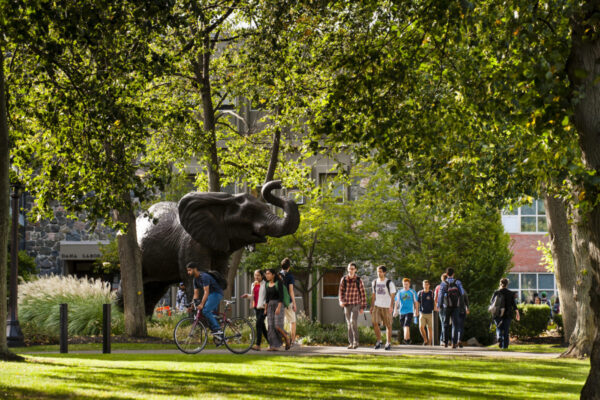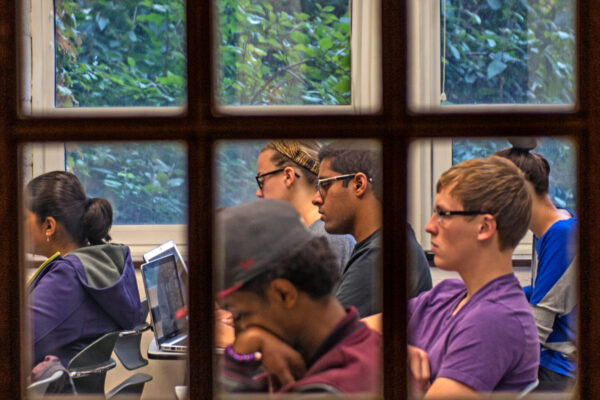In 2023, with pandemic mandates and lockdowns long gone, faculty burnout remains at an all-time high. CUPA-HR data point to growing workplace dissatisfaction in higher education, and a new Inside Higher Ed analysis finds that close to half of presidents indicate they are very aware of their faculty and staff’s mental health.
Burnout is a general term, with a variety of personal and professional meanings—and the impact is very real. Symptoms of burnout include feelings of energy depletion or exhaustion, increased mental distance from and feelings of negativity or cynicism towards one’s job; and a reduced ability to do one’s work. It may not be surprising that the World Health Organization has recognized burnout as a syndrome, linking it to “chronic workplace stress that has not been successfully managed.”
During two webinars ACE hosted recently, panelists discussed concepts around dissatisfaction, disengagement, lack of meaning, job performance, and workload, which are all contributing to the burnout phenomenon in the workforce, especially in academia.
Notably, burnout is often seen as a personal problem, akin to managing stress. But to have a truly productive conversation about how to solve this problem, we need to consider burnout as a workplace problem that manifests among workers rather than a problem that workers need to manage or solve on their own. And this is good news: burnout is a problem that colleges and universities can play an active role in remedying.
What has led so many of our faculty to experience burnout in recent years? During the webinars, panelists spoke to the lingering effects of the COVID-19 pandemic, ongoing concerns about racial injustice, and the increase in student mental health issues that are manifesting in the classroom.
In various ways, colleges and universities have asked for faculty’s help to address these complex problems, from adapting their courses to be delivered online, to cultivating a greater sense of inclusion and belonging, to responding to students’ emotional needs. Practically, these asks translate into feeling overworked because they are on top of the day-to-day grading, writing, researching, adapting courses for hybrid formats, and committee work. With more responsibilities on top of an already demanding workload there are fewer people to teach the courses, serve on the committees, and meet with students. Students spend a lot of time with faculty in their courses, labs, offices, and assistantships, so faculty involvement is both logical and necessary.
But at what cost? With burnout comes disengagement and employee turnover, at a time when hiring is more difficult than ever and the “Great Resignation” is a topic of regular higher education conversations.
These challenges, while difficult, are not without solutions. The webinar panelists’ recommendations coalesced around five themes.
Pay. Increasing compensation is both the most expensive place to start and likely the most effective. First, know what’s fair: look at data sources (CUPA-HR and professional associations can provide benchmarks) and determine if your institution is paying fairly. Remember that the market is going to demand higher salaries regardless of an institution’s predetermined budget. Keep in mind the cost of living associated with the location of your institution.
Second, assess how the Great Resignation and other turnover is impacting your operation. While pay at its most granular level is linked to an individual, compensation at large is a workforce issue. Funds are often found for things that are important, and an institution’s workforce is its most important asset. A recent CUPA-HR survey found that 76 percent of respondents would seek new opportunities for a salary increase. And again, students spend a lot of time with faculty, so faculty are worth investing in.
Lastly, it is worth pointing out that in addition to increasing retention, more pay can have real, human impact: financial well-being and burnout often go hand in hand.
Faculty development. Institutions can invest in supports for faculty that build a deeply connected community, develop confidence for instructors to effectively support all students, and help them to rediscover the joy of teaching.
Faculty attitudes and perceptions of the instructional component of their role at the university are important to overall faculty well-being. In the institutional setting, faculty satisfaction is meaningfully affected by relationships with colleagues and students, and their perception of university climate and culture. Data from faculty survey responses indicate that after participating in ACUE faculty development instructors are more enthusiastic about teaching, talk more with their colleagues about instruction, and find students are more receptive to their methods. Faculty also report significant gains in their self-efficacy for instruction.
Self-efficacy, or beliefs in one’s ability to produce a particular effect or level of performance, impacts an individual’s motivation to take on a task, the amount of effort they will put forth and sustain in the face of obstacles, and their performance in a variety of settings. Low self-efficacy is also one of three main ways that burnout manifests, with researchers on faculty burnout suggesting that support is well-indicated as an intervention:
Instead of directing attention to what faculty members are doing wrong in their teaching, scholarship, and administrative roles, it would seem advisable to use the tools available to encourage work engagement, increase job satisfaction, and improve job performance in the academic department.
As Broward College faculty member Francesca Marinaro recently said, “ACUE has a way of bringing out the best in your teaching persona and confirming to you that you are meant to be a teacher and you have good instincts.” She added, “And if you’re a seasoned instructor it can give your teaching a face lift, reinvigorate you to bring out the best in your students by bringing out the best in yourself.”
Flexibility. 2020 asked us all to be flexible: work remotely, be online at odd hours, collaborate and teach virtually, respond to Teams messages—all while managing our home lives. We learned that flexibility is not mutually exclusive to productivity, which was critical when caregiving responsibilities increased for many individuals. It was also critical for folks that needed to limit their exposure to others because of the risk of COVID infection to self or loved ones.
Now that we are in 2023, faculty and staff are asking for the same kind of flexibility in return (having already done it once). Rather than revert to the operational norms of 2019, we should embrace what we learned is possible when we give people the time and space to accomplish all their life’s responsibilities. Anecdotally, many students prefer the option of virtual or hybrid learning for their courses to limit commute times, parking fees, childcare, and other demands of in-person learning. Zoom and other technologies have been effective tools for the last several years for online teaching and learning. With this in mind, greater flexibility would benefit not only students, but faculty and staff as well.
Practices. As we ask more of faculty, it’s critical to also create workplace practices that enable the work to be manageable and achievable.
- Rather than imply that all work is equally important, communicate priorities and timelines. Keep in mind that faculty are balancing publication schedules, tenure and promotion applications, research schedules, and course management.
- Be aware of expectations around work; late-night emails or hastily called meetings can create a perpetual sense of urgency that leads to burnout. Additionally, evaluate what needs to be communicated at the meeting. Could it be an email rather than an hour-long Zoom or in-person meeting?
- Be honest about expectations and outcomes around new responsibilities. In many cases, the most realistic and energizing person to talk to is a peer who also doing the same work (for example, on a committee or implementing a new policy in their department). They can share their time commitment and reflections from the project.
Recognition. Each panelist spoke passionately about how feeling seen, supported, and encouraged by a supervisor can make a significant difference. A culture of genuine recognition—one that goes beyond the bulk email—moves the needle on people’s sense of fulfillment and success at work.
My own research on student affairs professionals and their well-being found that showing appreciation for good work does predict the well-being of staff—and it can lead to higher levels of well-being. The same applies to faculty.
Beyond any one practice, we encourage each campus to collect data on the mental health of its faculty and staff. The Healthy Minds Network has a faculty survey, as does the National College Health Assessment—and your human resources department may use other specific tools. Each campus is unique, and the thoughts and perceptions of individual members of your campus community are invaluable in understanding what will make a difference in the burnout level of faculty and staff.
For more information, watch recordings of ACE’s two webinars: “Faculty and Staff Burnout: What to Do About It” and “Faculty Well-being” (co-hosted with ACUE). Also, download ACE’s recent brief on faculty and staff burnout (PDF), which highlights how this phenomenon manifests and what leaders can do.
ACUE’s courses are endorsed by American Council on Education. To learn more about ACUE’s work, attend the 2023 National Higher Education Teaching Conference in New York City June 22-23 to be part of a growing movement designed to center quality teaching in higher ed’s student success and equity agenda. Register today.
If you have any questions or comments about this blog post, please contact us.



